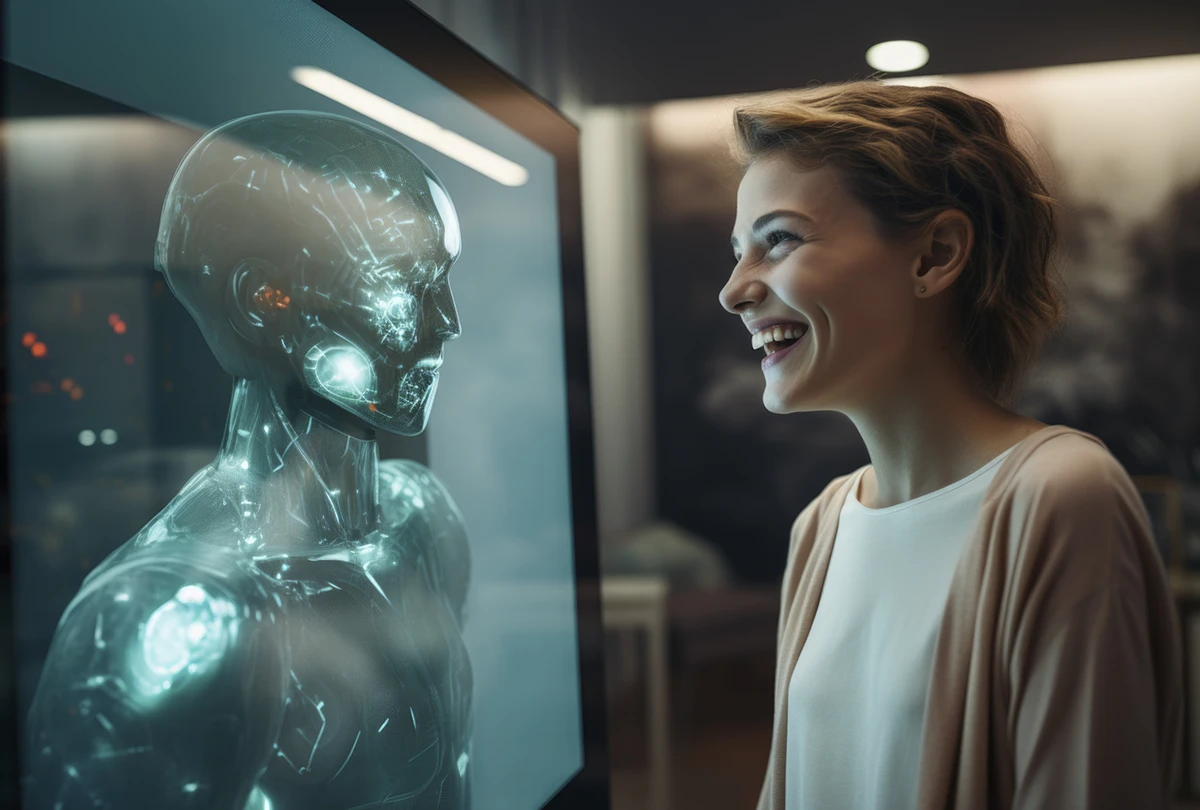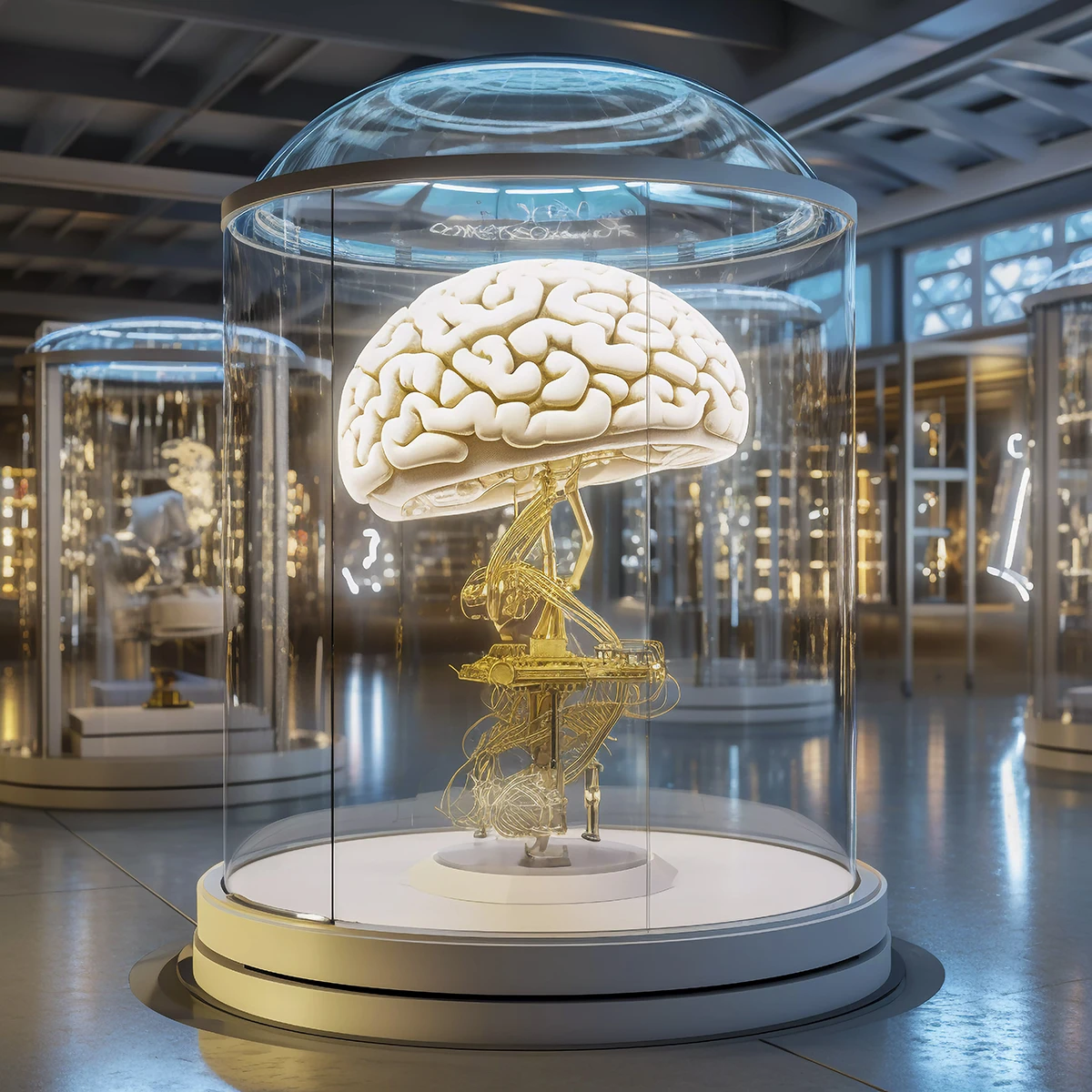The Future of Artificial General Intelligence (AGI)

The emergence of Artificial General Intelligence (AGI) has the potential to revolutionize nearly every aspect of human life. From transforming industries and revolutionizing healthcare to reshaping the nature of work and leisure, AGI could fundamentally alter how we live and interact with the world.
The prospect of machines possessing human-like cognitive abilities raises thought-provoking questions about AGI’s ethical, societal, and existential implications. How will we ensure that AGI is aligned with human values and goals? What impact will it have on employment and the global economy?
These are just a few profound questions that demand careful consideration as we contemplate the future of AGI. As we navigate the complexities of developing AGI, it is essential to approach these advancements with a deep understanding of their potential implications and to address the challenges they may present proactively.
Introduction
What does Artificial General Intelligence (AGI) mean?
Artificial General Intelligence (AGI) signifies machine intelligence that mirrors the comprehensiveness and versatility of human intelligence. This implies the ability to understand, learn, and apply knowledge across a wide range of tasks, surpassing specialized or narrow AI that can only master pre-set tasks. John McCarthy, a pioneer in AI theory, said, “As soon as it works, no one calls it AI anymore.” This encapsulates the fluidity and evolving nature of AGI.
A study by Nickel et al. published in the Proceedings of the AAAI Conference on Artificial Intelligence reveals that AGI has been under scrutiny for several decades, and real progress is starting to emerge.
How does AGI differ from Narrow AI?
Artificial Narrow Intelligence (ANI) and AGI bear a stark contrast. As evident in technologies like OpenAI ChatGPT, Apple’s Siri, or Google’s algorithms, ANI can perform specialized tasks. On the other hand, AGI mirrors human thinking in its breadth and depth. Futurologists envisage that AGI will perform predefined tasks and learn, think, understand, and innovate beyond its initial programming.
The ability of AGI to surprise us is captured succinctly by Alan Turing, the forefather of theoretical computer science and AI, “Machines take me by surprise with great frequency.”
Why should we discuss the future of AGI?
Given the staggering potential of AGI, its future demands serious discussion. OpenAI states that the risks and benefits of AGI are extreme. It promises to solve complex problems, propel scientific research, drive economies, and improve lives. However, if mismanaged or unregulated, it could also unleash havoc.
We bear the moral and ethical responsibility to steer this potentially disruptive technology towards beneficial outcomes, reinforcing the need for future-focused dialogue on AGI.

Evolution and Current State of AGI
A brief history of AGI’s development
Artificial General Intelligence (AGI) started in the mid-20th century and was guided by visionaries such as Alan Turing, who theorized about intelligent machines. However, actual strides in the field only started emerging in the 2000s.
The book The Master Algorithm by Peter Domingos details how advancements in machine learning algorithms have brought us closer to AGI. Yet, despite these progressions, we are still some distance away from achieving a full-fledged AGI.
Present-day applications and manifestations of AGI
Today, AGI remains largely in the realm of theoretical contemplation. However, certain developments in artificial intelligence have been edging us closer. For instance, Google DeepMind’s AlphaZero demonstrated its potential by learning board games from scratch, an ability previously assumed to require human levels of understanding.
Similarly, OpenAI’s ChatGPT, a remarkably powerful language prediction model, showcases human-like versatility, producing essays, answering queries, and even authoring software code, all with startling proficiency.
Case Studies – Success stories and failures in AGI
The rise of AGI-related advancements is signposted by notable successes, such as DeepMind’s AlphaGo, which defeated world Go champion Lee Sedol, showcasing a level of strategic thinking and adaptability previously confined to humans.
Conversely, IBM’s Watson, despite an early triumph in winning Jeopardy, stumbled in its healthcare applications, revealing that performance on niche tasks does not necessarily position a system closer to AGI.
These divergent cases underline the unpredictability and complexity of AGI. Renowned futurist Ray Kurzweil encapsulates this ongoing challenge, suggesting, “Artificial intelligence will reach human levels by around 2029. Beyond that, we will have multiplied the intelligence of our civilization a billion-fold.”
Insights from Experts
Expert opinions and forecasts about AGI
Experts harbor differing views about the timeline and journey to achieving AGI. Elon Musk, the CEO of Tesla and SpaceX, argues that AGI might even outpace human cognition in the coming half-decade. Meanwhile, contrary voices, such as Facebook’s AI chief Yann LeCun, believe AGI actualization requires multiple major scientific leaps.
Drawing from a pool of expert opinion, researchers Grace et al., published in the Journal of Artificial Intelligence Research, believe there is a 50% chance of AI outperforming humans in all tasks in 45 years and of automating all human jobs in 120 years.
Theorist and scholar Steven Hawking underlined the uncertainty surrounding AGI’s impact, stating, “the advent of super-intelligent AI would be either the best or the worst thing ever to happen to humanity. We do not yet know which.”
Views from top AI research labs and tech companies
Major AI research institutions like OpenAI and Google’s DeepMind acknowledge AGI’s transformational power and the considerable risks linked with its potential misuse.
Echoing these thoughts, Sundar Pichai, CEO of Google and Alphabet, calls for a global regulatory framework for AI, arguing, “AI is no different from climate – you can’t get safety by just one company or country working on it – you need a global framework.”
These takeaways highlight the growing consensus among AI leaders about balancing AGI’s potential with ethical considerations and safety measures.

Advancements and Future Potentials of AGI
Predicted technological leaps in AGI
Technological breakthroughs in AGI may come from enhanced neural network architectures, groundbreaking learning algorithms, and robust computational power. Quantum computers, for instance, are anticipated to supercharge AGI capability, offering massive computational resources above and beyond traditional systems.
Elon Musk’s brain-machine interface project, Neuralink, also promises to revolutionize AGI by drawing a direct link between human brains and AGI, ensuring the continued relevance of humanity in our fast-approaching future.
In ‘The Singularity Is Near,’ renowned futurist Ray Kurzweil mentioned, “So we will be able to meet the physical challenges of AI and robotics just as we’ve addressed other technological threats in the past: by using the technology itself.”
Transformational potential in society and specific industries
The transformative power of AGI spans across every societal sector. In healthcare, daily practices could be transformed with personalized medication, early disease detection, and advanced therapeutic techniques.
Moving to the education arena, AGI could democratize top-tier education through personalized instruction catering to individual learning styles and progression paces.
As Peter Diamandis mentioned, “The best way to predict the future is to create it yourself.”
AGI’s role in the future job market and the economy
The arrival of AGI will undoubtedly reshape the global job market and wider economic landscape. A report from the McKinsey Global Institute suggests that automation could force up to 375 million employees to shift occupational categories by 2030.
On the other hand, AGI might also give rise to new job fields, generating demand for skills related to AGI development, innovation, creativity, and other related disciplines, fueling an economy that thrives on disruption and innovation.
Contributions to global issues like climate change
AGI might serve as a potent new tool in our arsenal against climate change. By processing vast environmental data sets, AGI can generate precise climate models, predict environmental patterns, optimize energy efficiency, and spur innovations in renewable energy sources.
One of the world’s greatest minds, Albert Einstein, reminds us, “We cannot solve our problems with the same thinking we used when we created them.” Indeed, AGI could be the innovative leap we need to overcome our most pressing global challenges.
Breakthroughs of AGI in Global Challenges
Role in combating climate change
AGI could significantly bolster the battle against climate change. With its capacity to parse massive datasets, AGI could generate precise climate models, enriching our understanding of climate shifts and informing policy interventions.
A noteworthy research paper published in the Nature Climate Change journal asserts that AI, and eventually AGI, could expedite the discovery and implementation of innovative approaches for capturing and sequestering greenhouse gases.
Microsoft’s “Planetary Computer” initiative exemplifies such efforts, planning to utilize AI-driven algorithms to provide actionable environmental data for sustainability efforts.
Broadcaster and natural historian David Attenborough underlines the urgency, asking, “Are we content to leave our grandchildren an earth where the only elephants and rainforests exist in books?” This drives home the urgent need to apply cutting-edge solutions like AGI to tackle climate change.
Potential contributions to healthcare and the world economy
AGI holds the power to revolutionize healthcare, from diagnoses and treatments to overall healthcare management. Leveraging AGI, doctors could perform more accurate diagnoses, pharmacists could design personalized treatments, and administrators could optimize resource allocation.
Frost & Sullivan’s study estimates that AI in healthcare could generate up to $150 billion in annual savings for the U.S. healthcare economy by 2026. AGI would dramatically amplify these benefits due to its unparalleled capabilities in various healthcare domains.
In the broader economic arena, a PwC report forecasts that AI technologies could increase global GDP by $15.7 trillion by 2030, with AGI contributing significantly to this extraordinary economic upswing.
As AI pioneer Andrew Ng articulates, “AI is the new electricity,” highlighting its capacity to unlock unprecedented economic growth and innovation.

Risks, Challenges, and Ethical Considerations
Examination of the potential risks and ethical dilemmas AGI presents
While AGI offers numerous advantages, it also presents significant risks and ethical dilemmas. An esteemed MIT professor, Max Tegmark, highlighted an existential risk in his book, “Life 3.0: Being Human in the age of Artificial Intelligence”. The risk lies within the scenario where AGI if improperly designed, could inadvertently lead to human extinction.
On the ethical front, AGI introduces dilemmas regarding autonomy, responsibility, privacy, and biases. The prospect of AGI systems autonomously making decisions with significant impacts and repercussions raises significant questions about accountability and control.
Economic and societal impacts
The swift progress of AGI could lead to significant displacements in the job market. The World Economic Forum Future of Jobs Report forecasts that while 97 million new jobs will be created, 85 million jobs will be displaced due to automation, all by 2025.
AGI could exacerbate or reduce inequality, depending on distribution and accessibility. If AGI is monopolized and leads to wealth accumulation for a minority, social disparities could widen. Conversely, if AGI’s benefits are distributed evenly, it could significantly elevate the standard of living on a global scale.
Famed physicist Stephen Hawking once warned, “If machines produce everything we need, the outcome will depend on how things are distributed.”
Discussion on AGI surpassing human intelligence
The concept of singularity, where AGI surpasses human intelligence, creates a split line of thought. Some view this prospective milestone as exciting, opening doors for unprecedented technological advancements. Others perceive it as a potential threat capable of spiraling out of human control.
In his book “Superintelligence,” Nick Bostrom warns, “Before the prospect of an intelligence explosion, we humans are like small children playing with a bomb. Such is the mismatch between our plaything’s power and our conduct’s immaturity.”
Practical Solutions and Preventive Strategies
Existing practices to ensure ethical use of AGI
A collection of practices is implemented to maintain AGI’s ethical utilization and development. International entities like the IEEE have curated guiding principles for AGI’s ethical progression while industry-led initiatives, such as Google’s “AI Principles”, firmly articulate commitments to secure and benefit AGI.
Future strategies for mitigating AGI’s potential risks
Proposing future methods to alleviate potential risks of AGI is key. Emphasizing ‘Value Alignment’, a strategy highlighted by OpenAI through their Charter, is essential to align AGI’s objectives and incentives with human values. Researchers propose an international treaty to avoid a racing mindset towards AGI development that neglects safety measures.
AI ethics expert Timnit Gebru noted, “Algorithmic fairness isn’t just about data. It’s about power.” This encapsulates the necessity to judiciously and equitably use AGI’s capabilities.
Significance of regulations, laws, and governing bodies
The safe dissemination of AGI will heavily rely on regulations. Analogous to nuclear technology overseen by regulatory bodies and safeguards, AGI must also fall under robust governance mechanisms. Such bodies must create appropriate laws and guarantee their execution.
Calling for distinct AI rules, the President of Microsoft, Brad Smith, argues, “We believe it’s time to start adopting legislation,” emphasizing the urgency needed to regulate these upcoming, influential technologies.
Frequently Asked Questions
How close are we to achieving AGI?
While significant strides have been made in AI, the realization of AGI remains uncertain. Some experts predict it could happen in five years, while others estimate it will take several decades. However, all agree that the development of AGI will mark a significant milestone in human history.
What are the possible negative impacts of AGI?
Potential negative impacts of AGI include job displacement due to automation, exacerbation of social and economic inequality, violation of privacy, and the existential risk if AGI surpasses human intelligence. Furthermore, issues of accountability and control loom large over the misuse of AGI.
How can we ensure the ethical use of AGI?
Ensuring the ethical use of AGI involves various strategies, including ‘Value Alignment’ to align AGI with human values, governance mechanisms to oversee AGI development and use, comprehensive laws and regulations, and ensuring transparency and accountability in AGI applications.
Can AGI become a threat to humanity?
If not developed and managed correctly, the advent of AGI could pose severe risks, including existential threats. Thus, while harnessing the potential of AGI, measures must be taken to prevent misuse or unintended detrimental consequences.
What job categories might emerge with the advent of AGI?
While AGI might render some jobs obsolete, it is also expected to give birth to new ones. Skills related to AGI development and management, ethical oversight, adaptation and decision-making in an AGI-powered landscape, creative and innovative tasks that rely heavily on human uniqueness, etc., are likely to-be in demand.
How can we prepare for a future powered by AGI?
We can gear up for an AGI-driven future by investing in education and skills that will be relevant in the new landscape. Additionally, dialogue and mindfulness about the ethical considerations, potential risks, and mitigation strategies associated with AGI must be promoted.
Can AGI ever replace humans?
AGI is being developed to mimic human intelligence, but it remains debatable whether it can replace humans entirely. While it might automate several tasks currently performed by humans, creativity, emotional intelligence, ethical decision-making, and unique human experiences may remain irreproducible.

Conclusion
Recap of potentials, challenges, and future of AGI
AGI showcases significant potential and can revolutionize various sectors, such as healthcare, education, and climate change, while potentially powering the world economy. However, it also brings forth significant challenges and risks, including job displacement, potential misuse, and exacerbation of inequality.
Although the future of AGI remains uncertain, it emits an aura of excitement. As we achieve AGI, cautious optimism should be our guiding principle.
Importance of ethical implications and regulations
Discussing AGI’s potential unveils the importance of ethical implications and considerations of regulations. A balance must be found between AGI’s rapid advancement and the development of comprehensive regulations to avoid misuse. Ensuring ethical AGI design and deployment is necessary to direct AGI’s trajectory for societal benefits while mitigating potential risks.
A final perspective on the ever-evolving scope of AGI
In conclusion, AGI is an ever-evolving field with numerous implications for humanity. The focus areas for its development and deployment should expand from merely technical advancement to include ethical considerations, societal benefits, and precautions to curb potential harm.
Elon Musk cautioned, “We need to be super careful with AI. Potentially more dangerous than nukes.” This quote encapsulates the approach required for AGI’s future.
The arrival of an AI-powered future is inevitable. With collective effort, robust regulations, and ethical mindfulness, we can move towards a future where AGI works for us and with us.

Learner-in-Chief at Future Disruptor. A futurist, entrepreneur, and management consultant, who is passionate about learning, researching, experimenting, and building solutions through ideas and technologies that will shape our future.
Subscribe to the Future Disruptor newsletter.






Leave a Reply